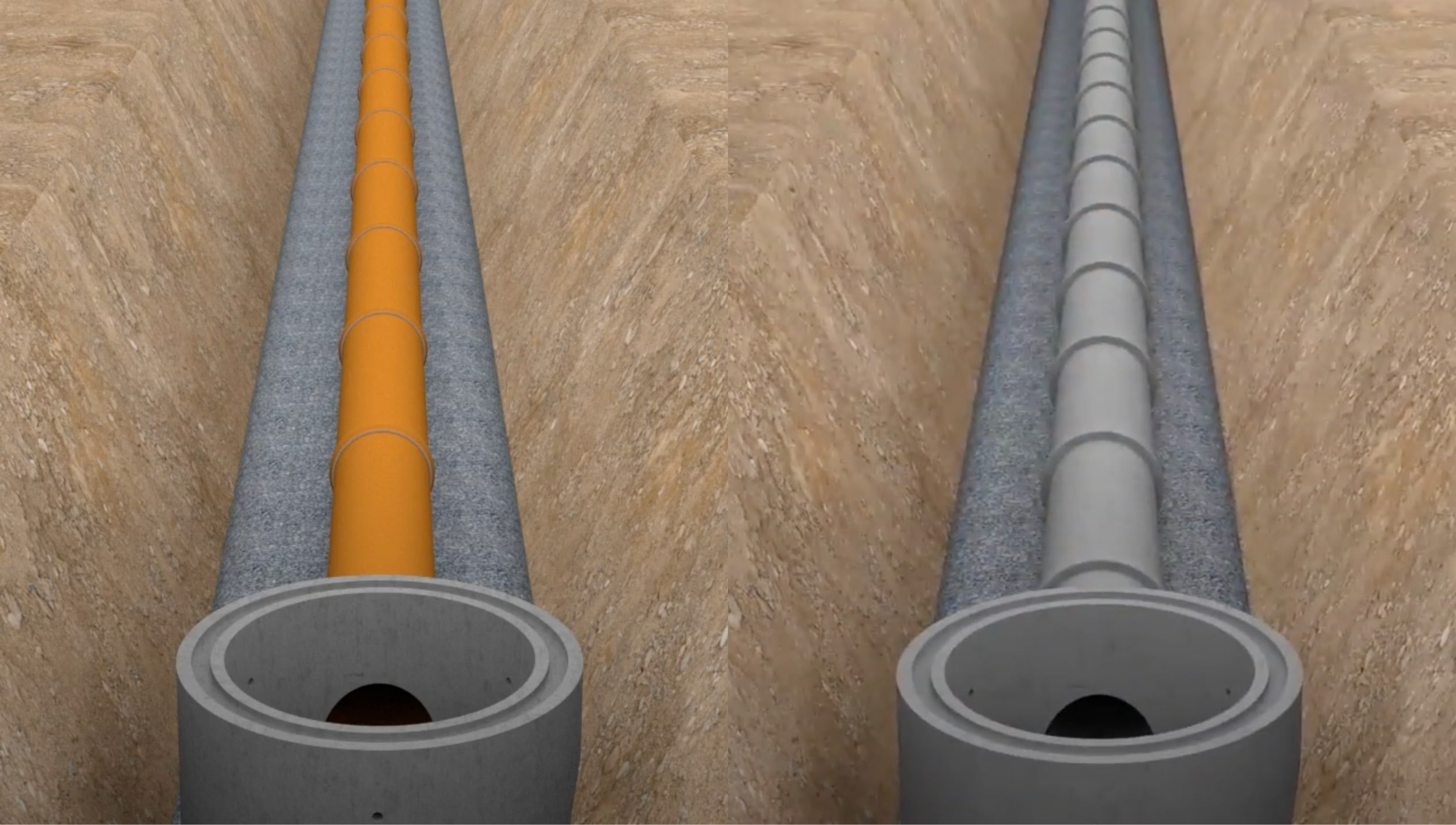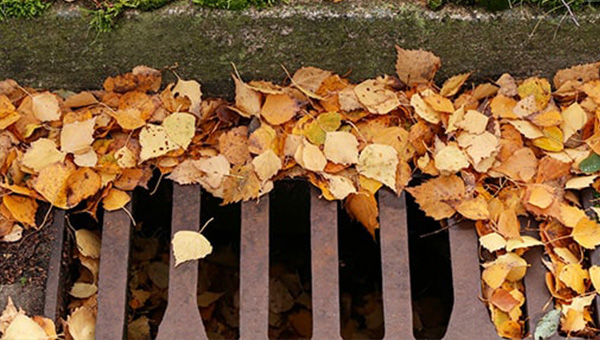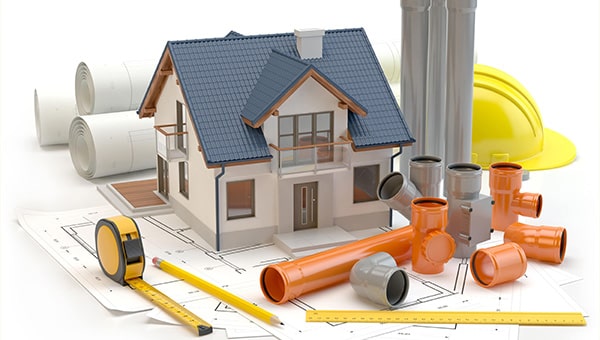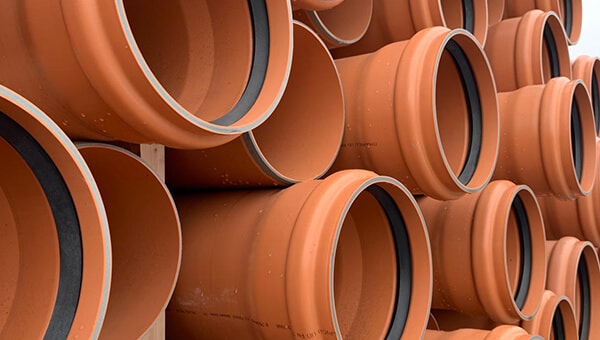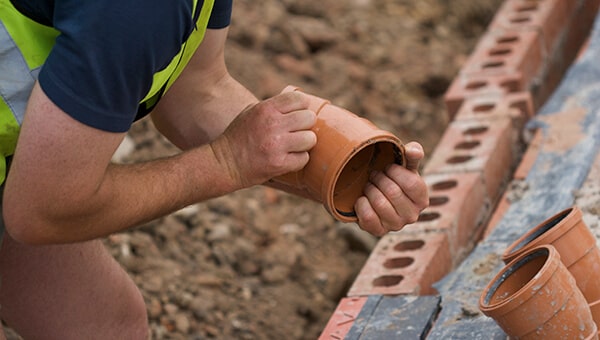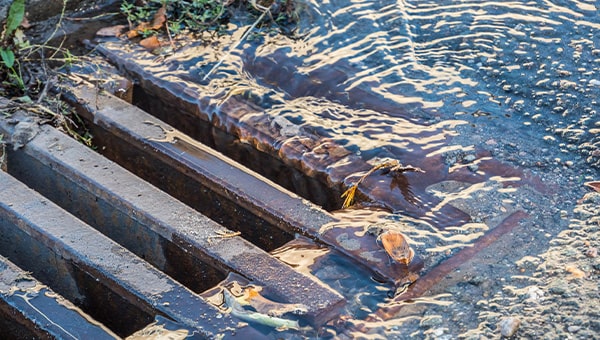
The world of drainage gullies can be a surprisingly complicated one. With a number of different gullies available for various uses, and a lot of inconsistencies regarding the use of terminology throughout the drainage industry, it’s easy to get a bit lost. But, given that they form an essential part of any property’s water management system, it’s important to know that you are using the right ones.
Before we get into the gullies themselves, however, there is another important question that needs to be asked - does your property have the right drainage connections? Before you can understand what gullies your property might have or need, you first need to know how the age of your property, and whether you have a combined or separate drainage system, can affect them. For that purpose, check out our guide on whether your house has the right drain connections for more information. We strongly advise giving it a read, as the information here is provided under the assumption that you know what type of system you have.
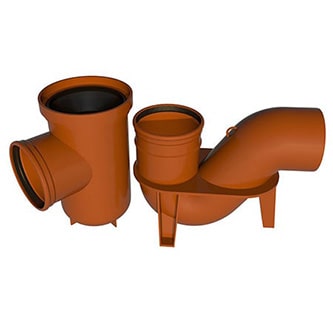
What are gullies?
By definition, a gully (in the context of a drainage system) is a drainage fitting with an open top, a definite base and an outlet to one or more sides. Depending on the type of gully, they can be used to connect wastewater outlets or stormwater/rainwater outlets to suitable drains. They can also be used to drain surface water from areas susceptible to flooding.
Gullies fall into two main categories; road gullies and domestic gullies.
Road Drainage Gullies
Road gullies, as the name would suggest, are designed to discharge surface water from roads and highways, where often large volumes of surface water can build-up.
Road gullies are designed to be much more robust than domestic gullies, in order to withstand the heavier trafficked environments in which they are installed. These are most commonly made from concrete or HDPE.
Domestic Drainage Gullies
Domestic gullies are designed to discharge surface water from your garden, rainwater from your guttering, and grey wastewater from your washing machine, dishwasher, bath, shower and sink into the appropriate drains. Installed outside, they are usually found under a downspout or external grey wastewater discharge point. In general, they are comprised of a grating/grid, to prevent unwanted debris from falling into the drains, and some sort of water trap, that holds just enough water back from the drain to prevent nasty odours from coming back out.
For the purpose of this article, these are the types of gullies that we will be focusing on.
Where do you need drainage gullies?
Drainage gullies are needed wherever there is a water discharge point around the outside of your property. They are most commonly found at the bottom of rainwater downpipes or in a patio area. Depending on the type of drainage system you have, you may also find them beneath any outside taps or external greywater discharge pipes, to collect any surplus run-off from and direct it back into the foul water system.
If you have a combined drainage system (as many pre-1970 properties do), all wastewater, stormwater and surface water is likely to be discharged into one drainage system and carried away from your home to a single destination. With this type of system, you may see external greywater waste pipes discharging into the same gully as the rainwater downspout.
Many properties built after 1970, however, are likely to have two separate systems; one to carry wastewater to the mains sewer and one to carry rainwater and surface water out to a watercourse. These systems are designed to put less pressure on the mains system by preventing “clean” water mixing with “dirty” water. In this type of system, you might find stormwater gullies and foul water gullies around your property, as rainwater and greywater will have to discharge into separate drains. Anything from an outside tap, washing machine, dishwater etc. is technically classed as foul water in the grand scheme of things, but effluent from these appliances is more commonly known as greywater. This relatively clean wastewater can discharge into a wastewater gully without any issue, but must not be allowed to flow into a rainwater/surface water drain. Also, for obvious reasons, you should never connect a gully near a toilet outlet, as that type of wastewater needs to stay within a sealed system.
While the installation location can define the gullies purpose, the gullies themselves all work on the same principle. It is only the design of the gully trap that changes.
What are gully traps?
The term Gully Trap, though often used to describe the gully itself, actually refers to an aspect of the internal design. While the specifics of that design can change between different types of gully, the general intent is the same. Water flows down through the centre of the gully, into a basin and back up towards an outlet pipe connected to the drain. When the flow of water into the gully stops, a small amount will remain at the bottom between the outlet and the central chamber. This “trapped” water serves to prevent any smells and gases from escaping back out of the drain and into the air.
The two most common types of gully/gully trap available are the P Trap Gully and the Bottle Gully. In general, they both do the same job, but there are a few important differences that need to be discussed.
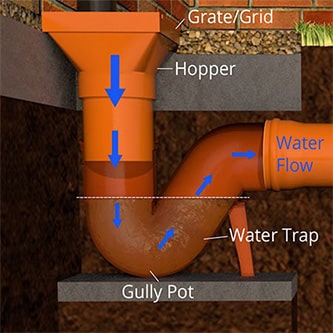
P Trap Gully
The P trap gully is, in its simplest form, just a length of pipe that has been moulded into a shape that resembles the letter “P”. Many of us would look at it though and call it a U-bend, and that is essentially what it is. The P-shaped bend (that looks like a “U”) acts in the same way as the U-bend beneath your kitchen sink, in that it forms a water seal between the opening of the drain and the wastewater further down the pipe. This prevents unpleasant gasses, released through the decomposition of wastewater, from rising back up from the drain.
Available with either a 90-degree bend or a 45-degree bend to the outlet, the P trap gully is most commonly used to collect rainwater from a downspout when connected to grated drainage fitting called a hopper.
There is one main downside to this type of gully, however, if a P trap gully, or the drain it is connected to, becomes blocked, it can’t be cleared using a drain rod. Whilst the grated hopper (or grid, as many of us would call it) works to keep leaves, twigs and other debris out of the gully, there will always be something that falls through the gaps. Over time, any debris that does make it through can build up and form blockages in either the gully or the connected drain. If this happens with a P trap gully, you would need to call in a drainage specialist, as, unless the gully was installed with a rodding eye or access point, you will likely require the aid of someone who can use electro-mechanical pipe cleaning to clear the blockage.
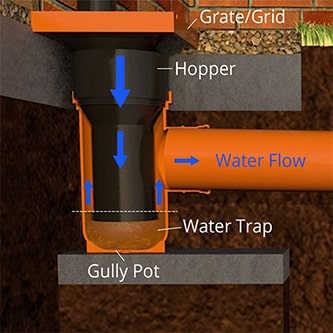
Bottle Trap Gully
The bottle trap gully works in much the same way as the P trap, but the change in design solves the rodding problem. Unlike the P trap, the bottle gully doesn’t require the tight bend in the pipe to trap the water. Instead, it uses a removable inner sleeve (or central chamber) that creates a space between itself and the wall of the gully that the water is forced up to reach the outlet pipe. This design still traps the water to use as a barrier against smells and gases, but it does so with a removable sleeve that makes cleaning out silt and debris by hand much easier and also provides direct access to the outlet for a drain rod in case of a blockage in the drain - though this can depend on how deep the gully has to be installed to and whether it requires the addition of a hopper and riser to reach the surface.
Bottle gullies are ideal for rainwater and wastewater use and most commonly found around newer properties or where old gullies have had to be replaced. One specific type of bottle gully, the Back Inlet Gully, is especially suited for foul water systems as it can be connected to an existing drain run. The outlet of this gully is slightly lower than the inlet to ensure the air seal is maintained.
Installing domestic drainage gullies
Installing a domestic drainage gully is a fairly simple process. However, unless you are 100% certain about whether you have a combined or separate drainage system, we would recommend calling in a qualified plumber.
Here are some important things to remember if you do plan on installing one yourself:
- All gullies should be sat on a bed of concrete to ensure the correct level is maintained.
- Drainage gullies should be installed 150mm below the property’s damp proof course.
- P-trap gully installation requires a hopper head to collect water and a rodding eye or access point to enable blockages in the drain to be cleared with a drain rod.
Domestic gully maintenance
Gullies form an essential part of your property’s drainage system, and it is vital to look after them properly. Keeping your gullies well maintained is the simplest way of preventing any blockages from occurring. Thankfully, doing so only requires only a few additions to the outside maintenance routine of your property - such as regularly sweeping up around your grids and clearing out your guttering a couple of times a year.
If you have any questions about gullies that weren’t answered in this article, contact JDP today. Our technical team is always on hand to help with all of your drainage needs.


